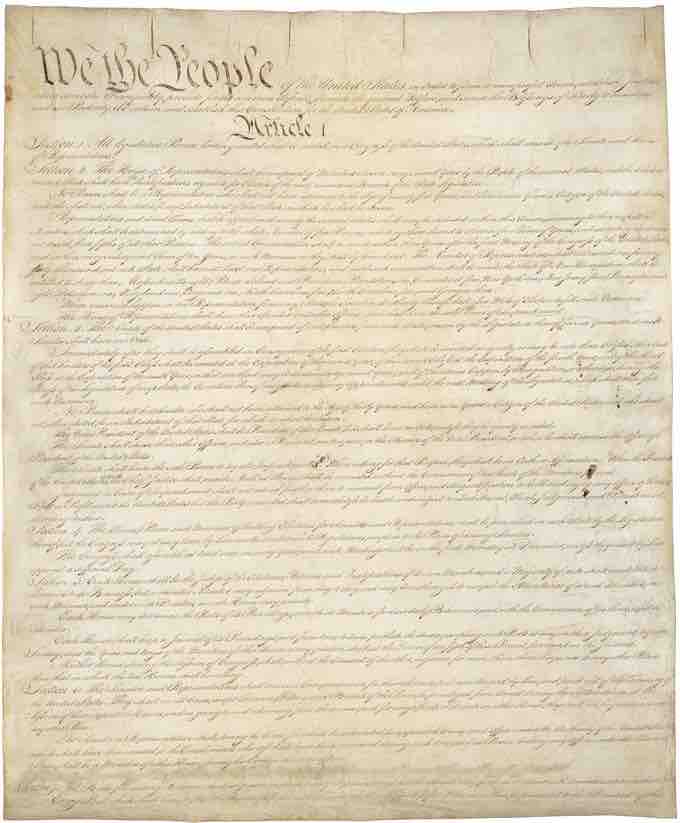To prevent one branch of government from becoming supreme, to protect the minority from the majority, and to induce the branches to cooperate, government systems employ a separation of powers in order to balance each of the branches. This is accomplished through a system of checks and balances which allows one branch to limit another, such as the power of Congress to alter the composition and jurisdiction of the federal courts. The Constitution and its amendments outline distinct powers and tasks for national and state governments. Some of these constitutional provisions enhance the power of the national government; others boost the power of the states.

The U.S. Constitution
The Constitution originally established that, in most states, all white men with property were permitted to vote. White working men, almost all women, and other people of color were denied the franchise until later years.
The legislative branch (Congress) passes bills, has broad taxing and spending power, controls the federal budget and has power to borrow money on the credit of the United States. It has sole power to declare, as well as to raise, support, and regulate the military. Congress oversees, investigates, and makes the rules for the government and its officers. It defines by law the jurisdiction of the federal judiciary in cases not specified by the Constitution. Congress is in charge of ratifying treaties signed by the President and gives advice and consent to presidential appointments to the federal, judiciary, and executive departments. The branch has sole power of impeachment (House of Representatives) and trial of impeachments (Senate), meaning it can remove federal executive and judicial officers from office for high crimes and misdemeanors.
The executive branch (President) is the commander-in-chief of the armed forces. He executes the instructions of Congress, may veto bills passed by Congress, and executes the spending authorized by Congress. The president declares states of emergency, publishes regulations and executive orders, makes executive agreements, and signs treaties (ratification of these treaties requires the vote of two-thirds of the Senate). He makes appointments to the federal judiciary, executive departments, and other posts with the advice and consent of the Senate, and has power to make temporary appointments during the recess of the Senate. This branch has the power to grant "reprieves and pardons for offenses against the United States, except in cases of impeachment. "
The judicial branch (Supreme Court) determines which laws Congress intended to apply to any given case, exercises judicial review, reviewing the constitutionality of laws and determines how Congress meant the law to apply to disputes. The Supreme Court arbitrates how a law acts to determine the disposition of prisoners, determines how a law acts to compel testimony and the production of evidence. The Supreme Court also determines how laws should be interpreted to assure uniform policies in a top-down fashion via the appeals process, but gives discretion in individual cases to low-level judges. The amount of discretion depends upon the standard of review, determined by the type of case in question. Federal judges serve for life.